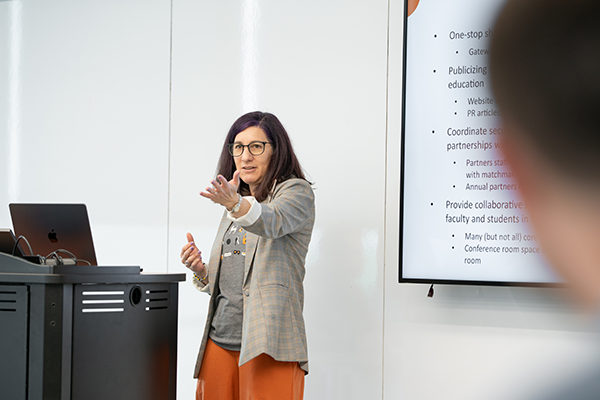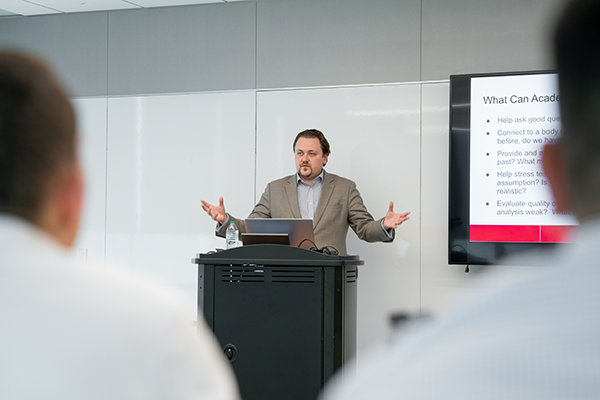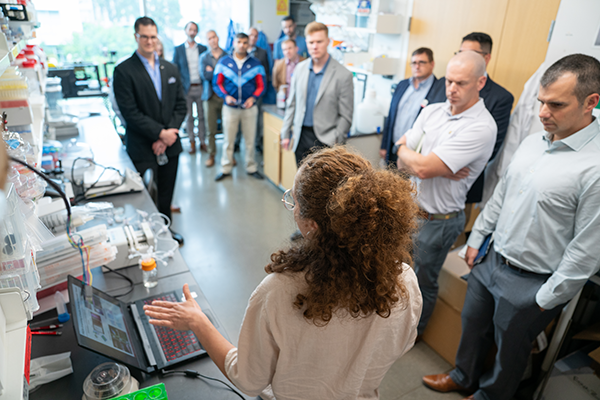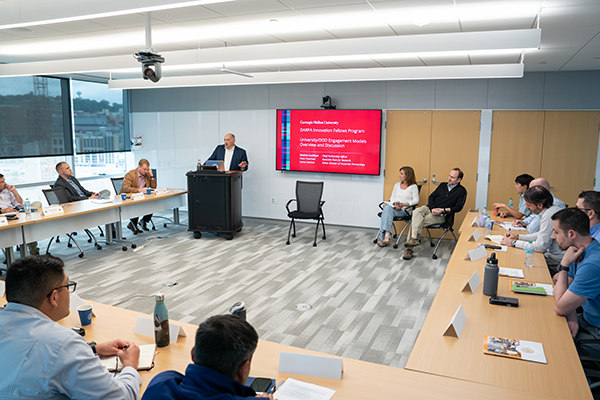CMU’s Critical Technology Institute hosts DARPA fellows
DARPA fellows hear from CMU faculty about emerging technologies, cybersecurity initiatives, and advancing academic and government partnerships.
On June 16, 13 fellows from the Defense Advanced Research Projects Agency (DARPA) gathered at Carnegie Mellon for a series of talks and laboratory visits focused on emerging technologies, cybersecurity, robotics, bioengineering, and expanding partnerships between government and academia. Hosted by CMU’s Critical Technology Initiative (CTI), Service Chiefs Fellows and Innovation Fellows received an inside look into the cutting edge research conducted at CMU’s main campus and other institutes, with a clear unifying message: the need for federally funded basic research is imperative.
DARPA, an independent research and development agency of the U.S. Department of Defense (DOD), works with innovators inside and outside of government to advance national security capabilities. For 12 weeks, the Service Chiefs Fellowship allows uniformed leaders across the five services to gain insight into the latest innovative science and technology research. The DARPA Innovation Fellowship, which is open to early-career scientists, gives government civilians an insider look into DARPA’s role in advancing research and innovation.
The day kicked off with a tour of the Interactive and Trustworthy Robotics (Intent) Lab, led by Andrea Bajcsy, assistant professor in the Robotics Institute and School of Computer Science. The Intent Lab studies how robots and other AI agents can reliably interact with the open world by employing methods of optimal control, uncertainty quantification, and deep learning. Bajcsy’s goal is to ensure robots act safely within the context and complexity of real-life situations—just like humans do.
After the tour, Michael Starz, executive director of the Critical Technology Initiative and former infantry officer for the U.S. Army, gave an overview of CTI’s mission and goals. At its core, CTI’s work combines technology and social science to help the government and industry make more informed decisions. CTI develops and deploys analytical frameworks, models, and tools to help the government and industry determine how to invest in the right critical technology to impact national security, economic competitiveness, and societal well-being. Furthermore, CTI focuses on mitigating the impact of disruptive events—such as global competition or conflict, natural disasters, and pandemics—while seizing opportunities to enhance supply chain resilience and rethinking innovation.
Lorrie Cranor, director of CyLab, echoed Starz’s message by providing the fellows with a look into CyLab’s 21-year impact across the university. CyLab is a “one-stop shop for security and privacy at CMU,” Cranor said. With goals of influencing policy and regulation, and creating the next generation of influential cybersecurity faculty, CyLab works to promote security and privacy research across all CMU departments.
“Security and privacy in machine learning is a hot topic, but we’ve been doing it a long time before it was a hot topic,” Cranor told the fellows. “I think people view us as the thought leaders in security and privacy.”
Later in the day, Christophe Combemale, assistant research professor of engineering and public policy, spoke about academics’ research rationale, including how researchers and innovators approach problems and develop research for the government.
“Academics are trained to ask questions and to develop strategies for answering them,” said Combemale. This trait empowers academic and government partnerships to succeed, he noted. He ended his presentation by discussing the levers that DOD grantmakers have to create closer alignment between research and defense priorities.
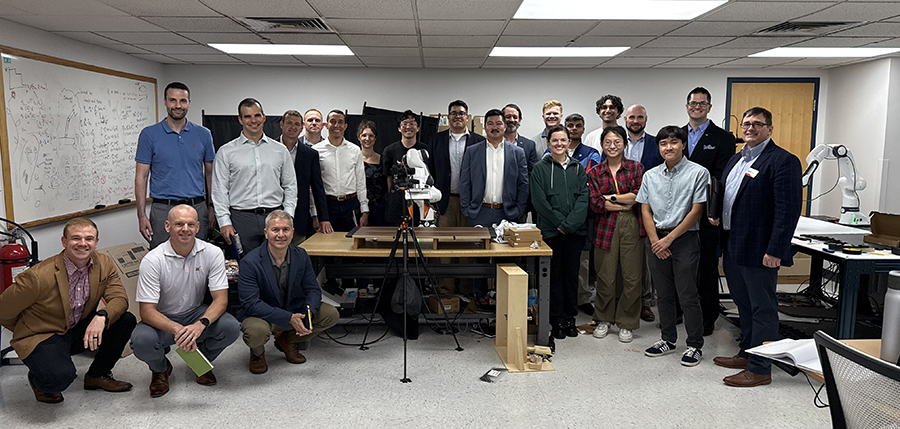
DARPA fellows pose for a group photo at the Intent Lab.
Fellows also got to tour Biomedical Engineering and Materials Science and Engineering Professor Adam Feinberg‘s lab. Postdoctoral fellows Ezgi Bakirci and Anne Behre spoke with the DARPA fellows about their work using FRESH 3-dimensional (3D) bioprinting to rebuild human tissue out of collagen, living cells, and other biomaterials. FRESH 3D bioprinting is a world-leading technology that can take medical imaging of a patient’s own body, such as from an MRI, and use that to rebuild a tissue or organ that has failed due to disease or has been damaged due to trauma.
The aim of Feinberg’s research is to build human tissue for a range of diseases, including new pancreatic tissue to treat Type I diabetes and new heart muscle to treat congenital heart defects, such as single ventricle disease. During the lab tour, fellows had the opportunity to hold a 3D bioprinted heart composed of collagen.
The day concluded with a roundtable discussion led by Franz Franchetti, Matt Sanfilippo, and Lenna Cominos of the Engineering Research Accelerator. Fellows were asked questions about the university, DARPA, and the DOD’s research engagement strategies.

